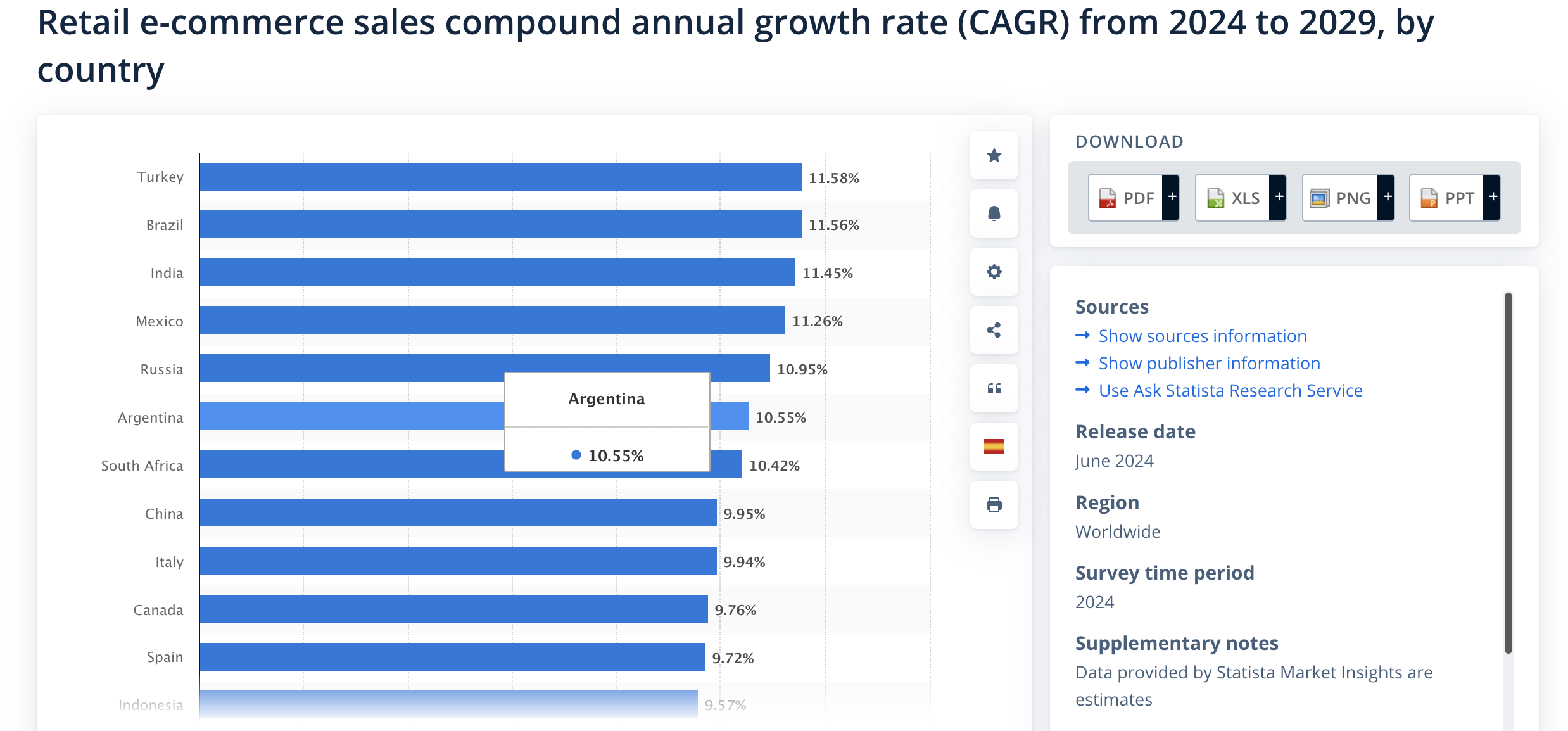In the ever-evolving world of ecommerce, dropshipping has emerged as a lucrative business model. The beauty of dropshipping lies in its simplicity: you sell products online without holding inventory, and when a customer places an order, the supplier ships the product directly to them. As expected, this model has gained traction globally, opening up new markets and opportunities.
But as dropshipping continues to globalize, tapping into emerging markets requires strategic planning and a keen understanding of global trends. So, today we’ll be exploring the globalization of dropshipping, the potential of emerging markets, and strategies to navigate this expansive landscape.
Table of Contents
The global appeal of dropshipping
Low entry barriers
Dropshipping offers low entry barriers, making it accessible to aspiring entrepreneurs worldwide. You don’t need to invest heavily in inventory or warehousing, which significantly reduces startup costs. This makes dropshipping an attractive option for individuals in countries with limited access to capital.
Flexibility and scalability
The flexibility of dropshipping allows you to manage your business from anywhere with an internet connection. This global accessibility means you can target multiple markets without being physically present.
Scalability is another significant advantage. You can easily add new products and explore different niches as your business grows.
Emerging markets: opportunities and challenges
Understanding emerging markets
Emerging markets refer to economies that are in the process of rapid growth and industrialization. Countries like Turkey, Brazil, India, Mexico or South Africa are the best examples. These markets present untapped opportunities for dropshipping due to their expanding middle class, increasing internet penetration, and growing consumer spending.
In case you would think the USA, UK, or EU are the only regions worth dropshipping, well, think again. According to a recent Statista Research, Turkey will rank first among 20 countries worldwide in retail ecommerce development between 2024 and 2029, with a compound annual growth rate of 11.6 percent. India and Brazil are also among the fastest-growing ecommerce markets globally, with CAGRs of over 11 percent.

Opportunities in emerging markets
- Growing consumer base: Emerging markets boast a growing consumer base with increasing disposable incomes. This means more potential customers for your dropshipping business.
- Less competition: Compared to saturated markets like the US and Europe, emerging markets often have less competition, offering a great ground for new entrants.
- Diverse product demand: Emerging markets have diverse cultural and economic landscapes, leading to varied product demand. This diversity allows dropshippers to cater to niche markets and offer unique products.
Challenges in emerging markets
- Logistical hurdles: Shipping and logistics can be challenging due to underdeveloped infrastructure and longer delivery times. Navigating specific customs and import regulations can add complexity.
- Payment processing: Payment systems in emerging markets may not be as developed or widely adopted as in more established economies. Ensuring secure and reliable payment options is crucial.
- Regulatory environment: Understanding and complying with local laws and regulations can be daunting. Each market has its own set of rules regarding ecommerce, consumer protection, and import/export duties.

Strategies for tapping into emerging markets
Conduct thorough market research
Before entering any new market, conduct thorough research to understand the local landscape. Identify key consumer trends, preferences, and purchasing behaviors. Use tools like Google Trends, social media analytics, and market research reports to gather insights.
Localize your offering
Localization goes beyond translation. It involves adapting your product descriptions, marketing messages, and customer service to resonate with local audiences. Understand cultural nuances and preferences to tailor your offerings accordingly. This could mean adjusting product features, packaging, or even pricing strategies.
Partner with local suppliers
Collaborating with local suppliers can help overcome logistical challenges and reduce shipping times. Local suppliers are more familiar with the market, customs regulations, and consumer expectations. Building strong relationships with reliable local partners is like having a local guide, they can help you navigate the intricacies of the market.
You can also choose a dropshipping automation platform like AppScenic where you will only find local top-rated suppliers that were thoroughly vetted for following strict high-quality standards.
Optimize payment solutions
Offer multiple payment options to cater to local preferences. In many emerging markets, cash on delivery (COD) is a popular payment method. Ensure your payment gateway supports local currencies and secure transactions. Optimizing payment solutions is like setting up multiple toll booths – it makes the payment process smooth and accessible for all customers.
Read more: The Right Payment Methods To Set On Your Dropshipping Store
Focus on customer service
Providing excellent customer service is crucial for building trust in new markets. Offer multilingual support and ensure your customer service team is familiar with local customs and practices. Prompt responses and effective problem-solving can turn first-time buyers into loyal customers.
Leverage social media and influencer marketing
Social media is a powerful tool for reaching new audiences. Platforms like Facebook, Instagram, and TikTok have a significant presence in emerging markets. Work with local influencers to build brand awareness and credibility. Influencers can act as your brand ambassadors, helping you connect with local audiences in a relatable way.
Monitor and adapt
Entering a new market requires continuous monitoring and adaptation. Keep an eye on key performance indicators (KPIs) such as sales, customer feedback, and website traffic. Use this data to refine your strategies and make informed decisions. Monitoring and adapting is like steering a ship – you need to make constant adjustments to stay on course.
Case study: a success story in emerging markets
The challenge
“EcoEssentials” is a dropshipping business specializing in eco-friendly products. After achieving success in North America and Europe, they decided to expand into emerging markets like Brazil and India. However, they faced challenges with shipping logistics, payment processing, and understanding local consumer behavior.
The strategy
- Market research: EcoEssentials conducted extensive market research to identify key trends and preferences in Brazil and India. They discovered a growing demand for sustainable products and a preference for COD payment methods.
- Localization: They localized their website, product descriptions, and marketing campaigns to align with local languages and cultural nuances. They also adapted their product range to include items popular in these markets, such as reusable kitchen products and eco-friendly personal care items.
- Local partnerships: EcoEssentials partnered with local suppliers to reduce shipping times and costs. They also collaborated with local influencers to promote their brand.
- Optimized payments: They integrated multiple payment options, including COD and local e-wallets, to cater to customer preferences.
- Customer service: They set up a multilingual customer service team to provide prompt and effective support.
The outcome
Within six months, EcoEssentials saw significant growth in their new markets. Sales increased by 40%, and customer satisfaction improved due to faster delivery times and localized customer service. Their success in emerging markets demonstrated the power of strategic planning and localization.
Conclusion
The globalization of dropshipping offers significant opportunities, particularly in emerging markets. By understanding the unique characteristics and challenges of these markets, you can develop strategies aligned with local preferences and build a successful global dropshipping business.
Make sure you conduct thorough market research, localize your offerings, partner with local suppliers, optimize payment solutions, focus on customer service, leverage social media, and continuously monitor and adapt your strategies. With the right approach, you can tap into the vast potential of emerging markets and take your dropshipping business to new heights.
Read next: International Dropshipping: Complete Guide for Business











